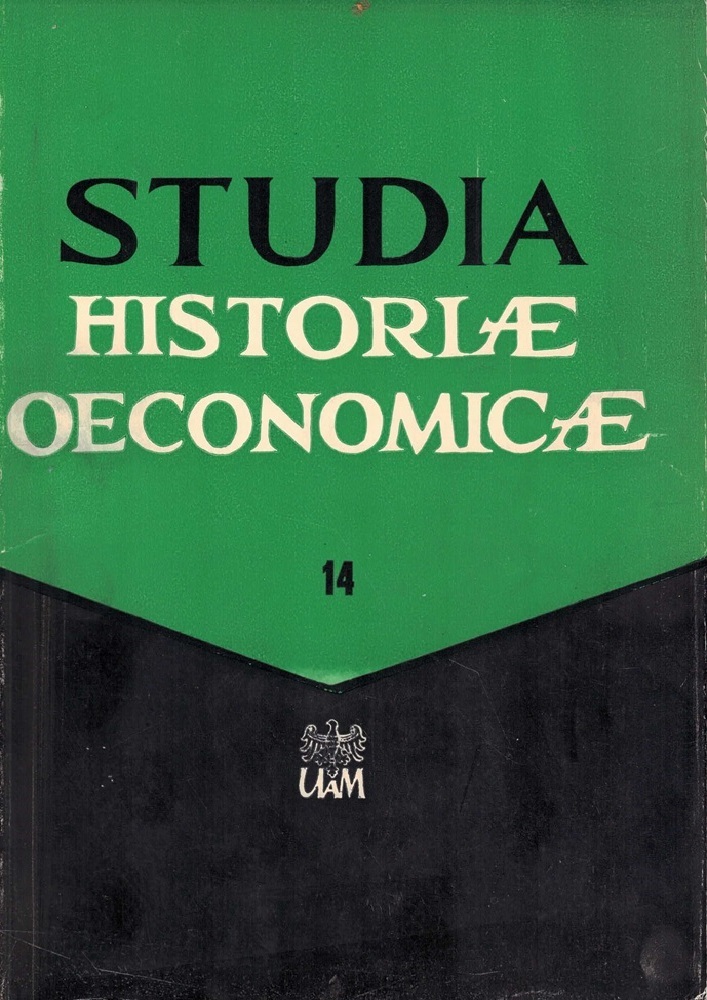Abstract
This study examines the economic development and strategic importance of the Ostrava industrial region within the Nazi German war economy between 1938 and 1945. The starting point is the Munich Agreement of 1938, which led to the territorial fragmentation of the region. The industrial core around Moravská Ostrava was cut off from key supply and transport networks, with far-reaching consequences for production capacity, labor availability, and economic autonomy. The aim of the study is to analyze the political, economic, and social transformations in the region during its occupation by the Third Reich. The author draws on contemporary documents, official memoranda, archival records, and economic reports to provide a detailed account of the area's integration into the German-controlled war economy. The analysis shows that the Ostrava region was quickly incorporated into the Reich’s economic planning due to its significant coal reserves and coke production – crucial for the German arms industry. Through property transfers, forced administration, and full inclusion in the Nazi command economy, the region was systematically subordinated to German war needs. Key findings concern the Germanization of industrial enterprises, the widespread use of forced labor, intensive resource exploitation, and the growing dominance of German corporations such as the Göring Works and Deutsche Bank. Despite heavy structural interventions and occupation policies, the Ostrava industrial zone remained a key industrial engine of the Reich until the end of the war.
References
Státní ústřední archiv v Praze - Ústřední svaz československých průmyslníků, sign. ÏSTr. 203.
Státní archiv Opava, pobočka Olomouc - Obchodní a živnostenská komora Olomouc, no. 1166; 1739 (document no. EO 22551); File 1207, no. 32993/59; File 1206, no. 35145/39.
Státní archiv Opava, pobočka Olomouc - Polizeidirektion M. Ostrava, File 464, no. 1/100; File 470, no. 9/1/2; File 487, no. 392; File 487, no. 3292; File 560, no. 9411.
Hospodářský styk Československa se zabraným územím (1938) Sestavil sekretariát Ús Tiskové podniky Ústředního svazu československých průmyslníků. Praha: Tiskové podniky Ústředního svazu československých průmyslníků.
Václav, K. (ed.) (1960)Die Vergangenheit warnt. Dokumente über die Germanisierungs und Austilgungspolitik der Naziokkupanten in der Tschechoslowakei. Praha: Orbis.
Zprávy Ústředního statistického úřadu. Vol. XX, 45, 46 (1939) Praha: Ústřední statistický úřad.
Bradáč, Z. (1966) ‘Těžba OKR mezi Mnichovem a 15. březnem 1939’, Časopis Slezského muzea, Ser. B, XV.
Grobelny, A. (1970a) ‘Český Těšín – sídlo německé iredenty v letech 1938–1939’, Těšínsko, 4, pp. 57–58.
Grobelny, A. (1970b) ‘Nápor nacistů na Těšínsko v roce 1939’, Časopis Slezského muzea, Serie B, XIX, pp. 128–138.
Grobelny, A. (1972) ‘Kvelmocenské hře o průmyslové Ostravsko v roce 1938’, Časopis Slezského muzea, Serie B, XXI, pp. 88–93.
Grobelny, A. (1974a) ‘Československý průmysl a nacistické Německo’, in Grobelný, A. and Pallas, L. (eds) Zájem říšskoněmeckých koncernů o československé průmyslové oblasti. Materiály z konference konané v Opavé ve dnech 16.–17. října 1973. Opava: Slezsky Ústav Československé Akademie, pp. 69–138.
Grobelny, A. (1974b) ‘Pět německých dokumentů o Slovenském národním povstání’, Slezský sborník, 72, pp. 245–257.
Grobelny, A. (1974c) ‘Polský cukrovarnický kartel a Těšínsko v letech 1938–1939’, Slezský sborník, 72, pp. 184–203.
Grobelny, A. (1975) ‘Kúloze dr. Harbicha na Těšínsku na podzim 1938’, Těšínsko, 3, pp. 4–6.
Historie výstavby a vzniku Nové hutě Klementa Gottwalda v Ostravě–Kunčicích (1966) Praha: Práce.
Jiřík, K. Pitronová, B. (eds) (1967) Dějiny Ostravy: vydáno k 700. výročí založení města. Ostrava: Profil.
Kána, O. and Michňák, J. (1962) Ostravsko v době nacistické okupace. Studie a dokumenty. Ostrava: Krajské nakl., Supplement no. 34.
Kozina, A. (1947) ‘Koksovny ostravsko-karvinských dolů. Vydáno k XX. sjezdu čsl. inženýrů’, in Technická práce na Ostravsku 1936–1946. Ostrava: Spolek československých inženýrů, odbočky v Ostravě.
Král, V. (1958) Otázky hospodářského a sociálního vývoje v českých zemích. Vol. 2. Praha: Československá akademie věd.
Malá, I. and Losjuk, P. (1959) ‘Následky mnichovské dohody v čs. pohraničí’, Sborník archívních prací, 1, pp. 3–56.
Matýsek, J. (1969) ‘Bombardování Mor. Ostravy v letech 1944–45 ve světle archívních dokumentů’, Ostrava. Sborník k dějinám a výstavbě města, 5, pp. 217–222.
Myška, M. (1963) ‘Ostravsko mezi Mnichovem a 15. březnem’, Slezský sborník, 61, Opava, pp. 257–276.
Nečas, C. (1970) Vítkovické železárny v době národní nesvobody 1938–1945. Ostrava–Brno: Vítkovické železárny, Univ. J.E. Purkyně.
Paclík, J. (1965) ‘Ke vzniku NHKG 1945–1948’, in Lehár, B. (ed.) Dějiny závodů v ČSSR. Praha: Práce, pp. 70–82.
Paclík, J. (1970) ‘O plánech výstavby Třineckých železáren za nacistické okupace’, in Z dějin Třineckých železáren. Praha: Práce.
Pavelčíková, N. (1990) K problematice vývoje ostravské průmyslové oblasti v letech nacistické okupace. Opava, manuscript.
Plaček, V. (1967) ‘Ostravský kamenouhelný revír v době nacistické okupace’, in Ostrava. Sborník příspěvků k dějinám a výstavbě města, 4. Ostrava: Profil, pp. 45–81.
Plaček, V. (1971) ‘Ostravská průmyslová oblast v letech 1938–1945’, Průmyslové oblasti, 3, pp. 8–46.
Potužil, F. (1941) Řízené hospodářství v českých zemích. Praha: Česká společnost národohospodářská.
Prokešová, N. (1969) ‘Následky mnichovské dohody pro ostravskou průmyslovouoblast’, Slezský sborník, pp. 1–30.
Průcha, V. (1967) ‘Základní rysy nacistického hospodářství v českých zemích v letech nacistické okupace’, Historie a vojenství, 1967(2), pp. 215–239.
Průcha, V. and Olšovský, R. (1966) ‘Vliv nacistické okupace na československé hospodářství’, in Nacistická okupace Evropy. Praha: Naše vojsko, pp. 43–103.
Radandt, H. (1971) ‘Podíly německých koncernů na podnicích v Československu v letech 1938–1945’, in Grobelny, A. (ed.) Průmyslové oblasti. Národnostní a hospodářská politika nacistů v zabraných průmyslových oblastech se zvlástním zameřením na ostravskou a hornoslezskou průmyslovou oblast, 3. Ostrava: Profil, pp. 154–203.
Sládek, O. (1975) ‘Nacistický plán „spálené země“ na Ostravsku’, Ostrava. Sborník k dějinám a výstavbě města, 8, pp. 67–102.
Die wirtschaftliche Bedeutung der Angliederung Olsa–Schlesiens an Polen (1938) Königsberg: Institut für Osteuropäische Wirtschaft.
‘Wirtschaftstagung in Mährisch–Ostrau der Regionalen Gruppe des Zentralverbandes der Industrie’ (1941) Der Neue Tag, no. 49, 18 February, p. 8.
Wrzosek, A. (1939) ‘Ziemie odzyskane Śląska Cieszyńskiego. Zarys geograficzno-krajoznawczy’, Zaranie Śląskie, XV(2–4), pp. 74–80.
Za svobodu Československa. Kapitolky z dějin československé vojenské jednotky v SSSR za druhé světové války. Vol. 2 (1960) Praha: Naše vojsko.
License
Copyright (c) 1979 Andělín Grobelný
This work is licensed under a Creative Commons Attribution-ShareAlike 4.0 International License.





